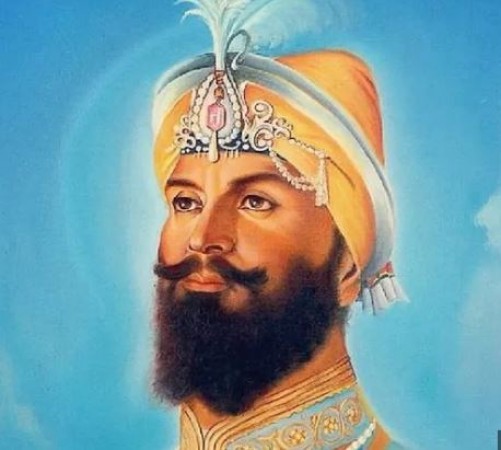
Guru Gobind Singh Ji was the son of Mata Gujri and Guru Tegh Bahadur Singh Ji the ninth Guru. Gru Teagh Bahadhur Ji was travelling across Bengal and Assam. Then he returned to Patna in 1670, he directed his family to return to the Punjab. On the sites of the house at Patna in which Gobind Rai was born and where he spent his early childhood now stands a sacred shrine, Sri Patna Sahib Gurudwara, Bihar.
In the gloom of the night, a glorious Divine Light shone. Muslim mystic Pir Bhikan Shah offered his prayers in that easterly direction (as opposed to his usual westward path), and using this Divine Light as his guide, he travelled with a group of his devotees till he arrived in Patna Sahib, Bihar.
Also Read: Mata Gujri Ji: Great Sikh Woman
In 1666, Mata Gujri gave birth to Gobind Das. Pir Bhikan Shah approached the young kid and presented him with two bowls of milk and water, representing the major religions of Islam and Hinduism, respectively. The youngster put his hands on both bowls while grinning. In absolute humility and awe before the new Prophet of all humanity, the Pir bowed.
At Paonta, which he had established on the banks of the River Yamuna and to which place he had temporarily relocated in April 1685, Guru Gobind Singh produced a large portion of his creative literary output. However, poetry in and of itself was not his goal. For him, it was a way to make the divine principle clear and put into concrete form a picture of the Supreme Being that had been given to him. This tenor contains his Jap Sahib, Swayas, and the song Akal Ustat.
Also Read: Significance Of Nishan Sahib
He promoted love, equality, and a strictly moral and ethical code of conduct through his poems. He condemned idolatry and superstitious beliefs and practises in favour of the worship of the One Supreme Being. To ensure that God's justice was carried out, he glorified the blade itself, eulogising it as Bhagauti. The sword was never intended to represent aggression or be used for egotistical purposes. It was only to be utilised in extreme cases of self-defence as it was the symbol of manliness and self-respect.
Guru Gobind Singh used his free time when he was staying at Paonta to do various manly sports, including riding, swimming, and archery. His growing popularity with the populace and his men's skill in combat aroused the enmity of the adjacent Rajput hill kings, who, under the leadership of Raja Fateh Chand of Garhwal, gathered a force to attack him.
Also Read: Bhai Mani Singh Ji: Great Sikh Personality
Gobind Das was accompanied to Anandpur, then known as Chakk Nanaki, in the foothills of the Sivaliks, where he arrived in March 1672 and received his early education in Persian, Punjabi, Braj, Sanskrit, and Sanskrit writing. When a startling change occurred in his life and the lives of the community he was meant to lead, he was only nine years old.
Also Read: Khanda Sahib: Khalsa Insignia
Bibi Nanki Ji: Founder Of Sikh Faith
Guru Angad Devi Ji: Relationship With Humayun